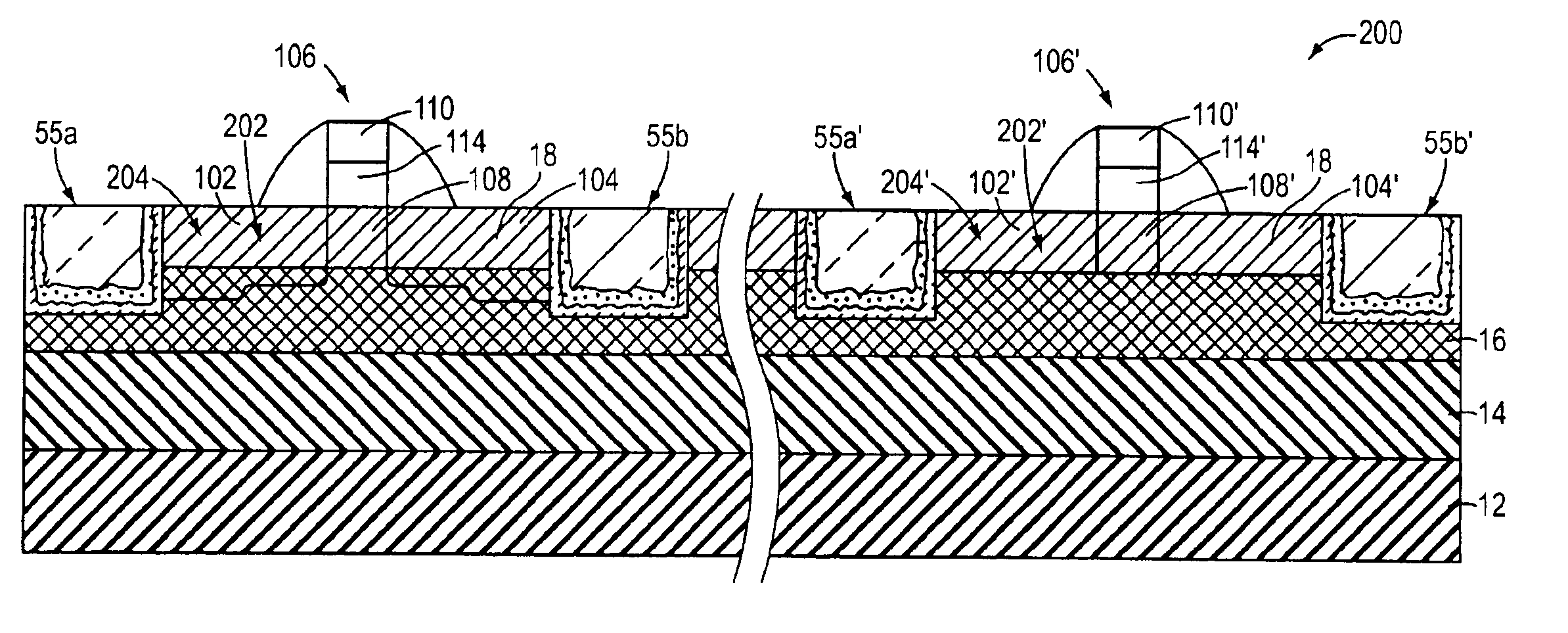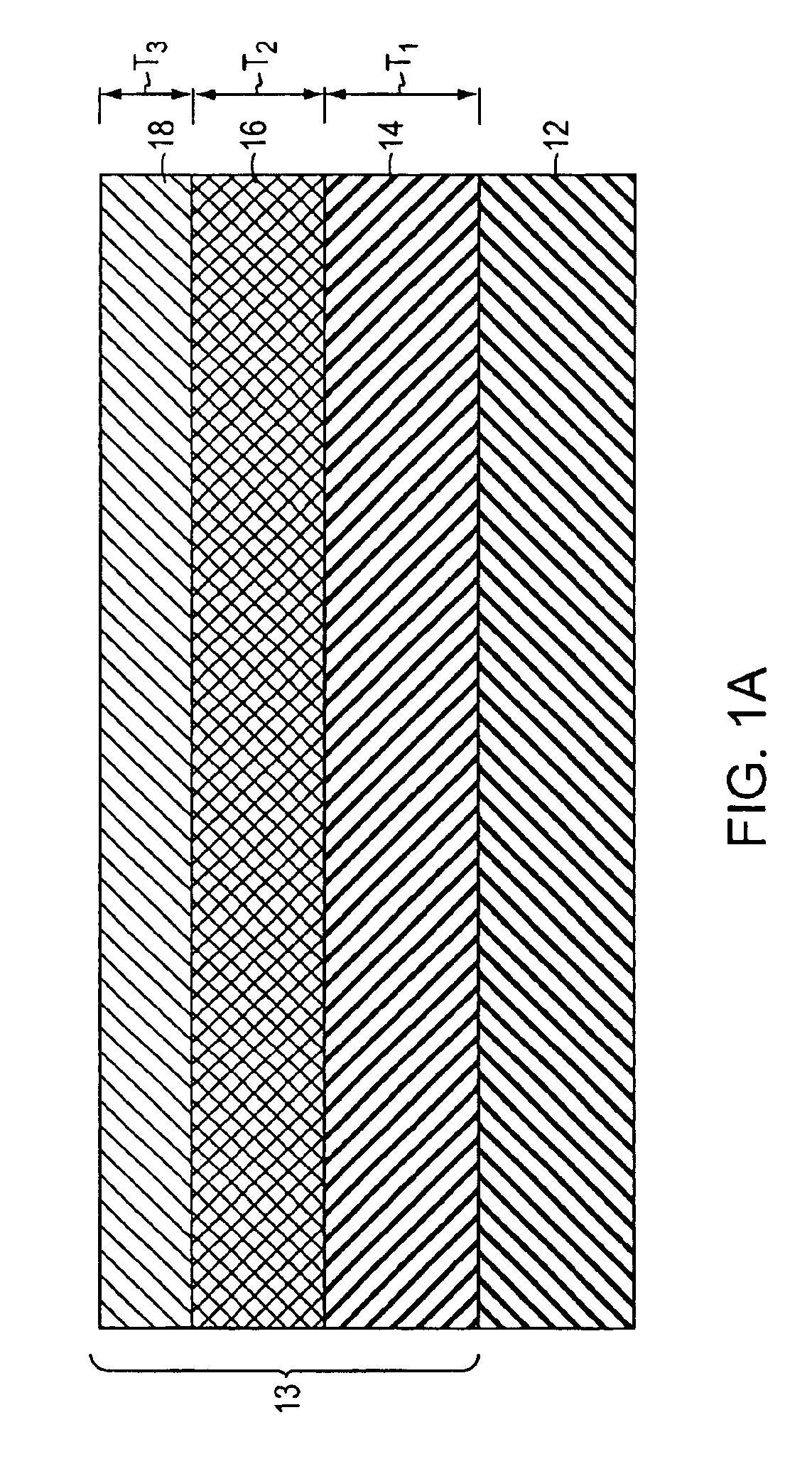Shallow trench isolation process
a technology of isolation process and trench, applied in the direction of semiconductor devices, electrical equipment, transistors, etc., can solve the problems of affecting the inability to resist etchants used in subsequent processing, and the inability to detect the current of the transistor, etc., to achieve the effect of improving the performance of the transistor
- Summary
- Abstract
- Description
- Claims
- Application Information
AI Technical Summary
Benefits of technology
Problems solved by technology
Method used
Image
Examples
Embodiment Construction
[0030]In FIG. 1a, which illustrates a structure amenable to use in connection with the present invention, a substrate 12 is made of a semiconductor, such as Si, Ge, or SiGe. A plurality of layers collectively indicated as 13 are formed on substrate 12. The plurality of layers 13 may include a relaxed graded buffer layer 14 disposed over substrate 12. Graded layer 14 includes, for example, SiGe having a grading rate of, for example, 10% Ge per μm of thickness, and a thickness T1 of, for example, 1-9 μm.
[0031]A relaxed layer 16 is disposed over graded SiGe layer 14. Relaxed layer 16 contains, for example, Si1-xGex wherein 0.1≦x≦0.9 and has a thickness T2 of, e.g., 0.2-2 μm. In some embodiments, Si1-xGex may include Si0.70Ge0.30 and T2 may be approximately 1.5 μm. Relaxed layer 16 may be substantially or fully relaxed, as determined by triple axis X-ray diffraction, and may have a threading dislocation density of 6 dislocations / cm2, as determined by etch pit density (EPD) analysis. Bec...
PUM
 Login to View More
Login to View More Abstract
Description
Claims
Application Information
 Login to View More
Login to View More - R&D
- Intellectual Property
- Life Sciences
- Materials
- Tech Scout
- Unparalleled Data Quality
- Higher Quality Content
- 60% Fewer Hallucinations
Browse by: Latest US Patents, China's latest patents, Technical Efficacy Thesaurus, Application Domain, Technology Topic, Popular Technical Reports.
© 2025 PatSnap. All rights reserved.Legal|Privacy policy|Modern Slavery Act Transparency Statement|Sitemap|About US| Contact US: help@patsnap.com



